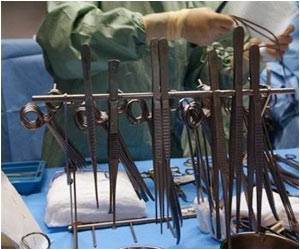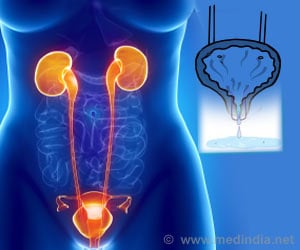Nearly one in three babies born in the United States is delivered via Cesarean section, or C-section.

‘Compared to vaginal delivery, Cesareans are associated with a number of increased health risks for mother and baby - including increased mortality - as well as longer hospital stays and increased health care costs.’





Nearly one in three babies born in the United States is delivered via Cesarean section, or C-section. Compared to vaginal delivery, Cesareans are associated with a number of increased health risks for mother and baby - including increased mortality - as well as longer hospital stays and increased health care costs. The study measured the impact of a series of strategic quality improvement interventions on the hospital's nulliparous, term singleton vertex (NTSV) Cesarean rate - or the proportion of single babies carried to at least 37 weeks in the vertex position born to women having their first baby that were delivered via Cesarean. "The rate of Cesarean deliveries in low-risk women varies significantly from hospital to hospital across the nation, and such wide disparities suggest that some Cesarean deliveries may be performed for reasons other than medical necessity," said first author Mary A. Vadnais, MD, MPH, a maternal-fetal medicine specialist and Vice Chair of the Obstetrics Quality Assurance Committee at BIDMC. "Our research shows that quality improvement initiatives can significantly reduce Cesarean deliveries in low-risk women, benefiting mothers and reducing health care costs."
Beginning in 2008, BIDMC obstetricians implemented a series of interventions in five areas: interpretation and management of fetal heart rate tracings, provider tolerance for labor, induction of labor, provider awareness of NTSV Cesarean delivery rates and environmental stress. During the intervention period, researchers found that the NTSV Cesarean rate decreased from 34.8 percent to 21.2 percent, below the U.S. Department of Health and Human Service's recommended target rate of 23.9 percent. The hospital's overall Cesarean rate also declined from 40 percent to 29.1 percent over the same period.
"Since implementing these quality improvement measures, our department has seen a steady decline in our Cesarean rate," said senior author Toni Golen, MD, Medical Director of Labor and Delivery and Post-Partum at BIDMC. "More important, with that decline we have not seen a clinically significant rise in complications among babies or mothers, which demonstrates the success of the interventions."
Vadnais and colleagues used available published data and assessed environmental factors in the BIDMC Labor and Delivery unit to design strategic interventions aimed at lowering the NTSV Cesarean delivery rate. In some cases, these interventions meant standardizing protocols, increasing provider education or revising guidelines. For example, slow progression of labor is a common reason for a Cesarean delivery. However, historical norms for labor progress may not apply to modern obstetrical populations. Reassessing how to manage slower labors allowed physicians to avoid Cesarean deliveries based solely on the previously expected rate of cervical changes.
Advertisement
"We designed the improvement interventions so that they can easily be customized to meet the needs of any medical institution," Golen added. "Our hope is that other hospitals will replicate this approach by identifying factors within their practice and implement similar quality improvement initiatives so that they can reduce their Cesarean delivery rates as well."
Advertisement
Source-Eurekalert









